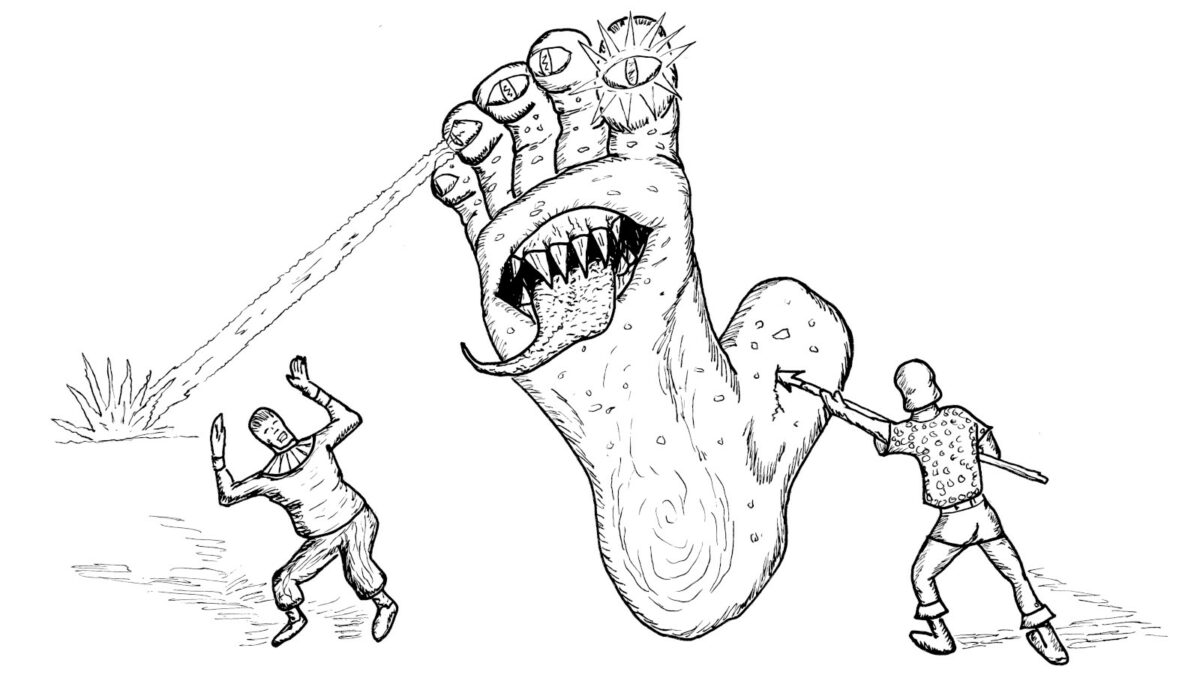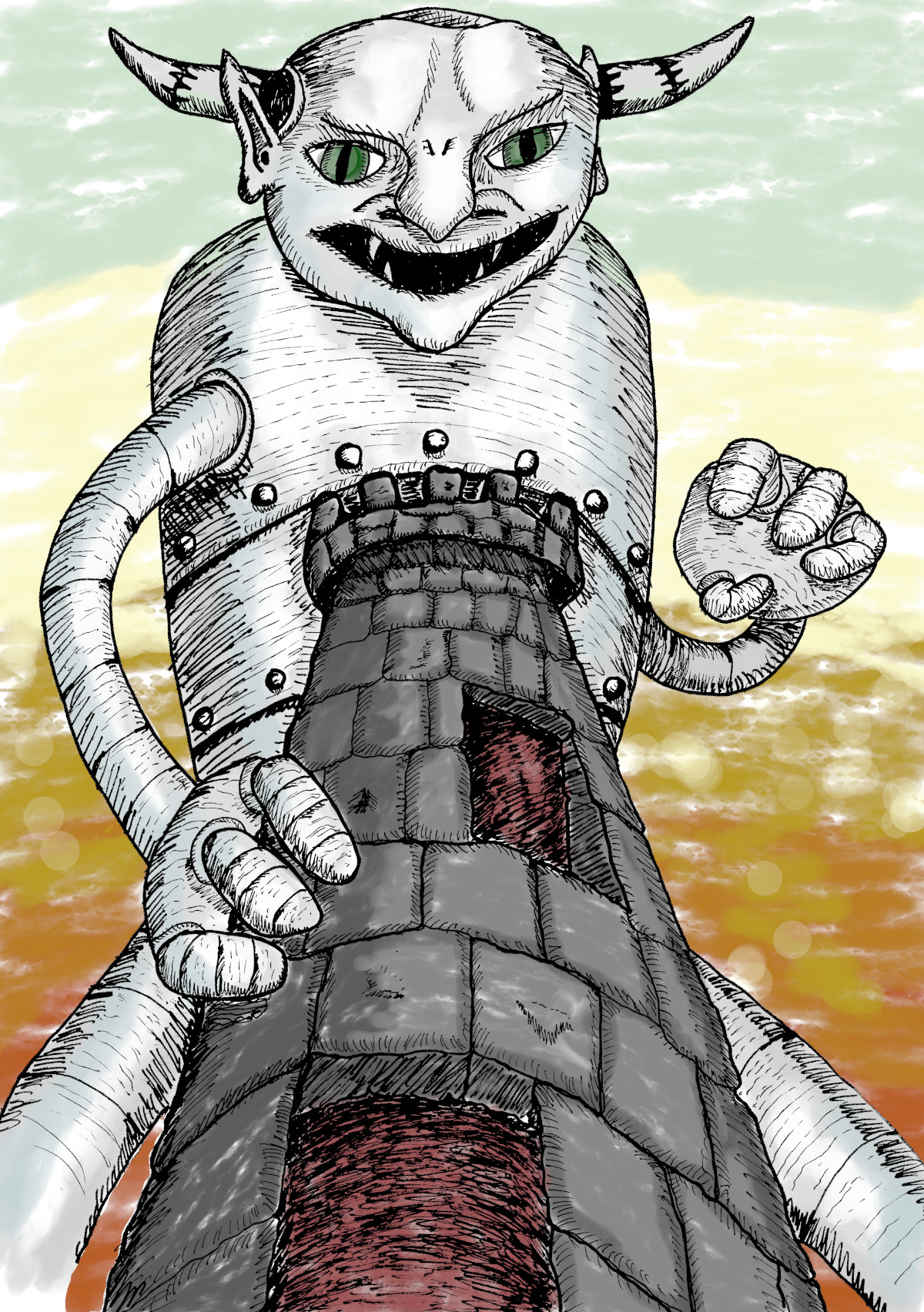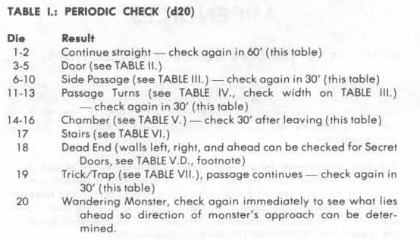Legend tells of the profane experiments of the wizard Siahac, he who dwells in a black pyramid somewhere in the western peaks. Among his many inscrutable acts, one of the most amazing is the creation of the bestomper. He unleashed it upon an army of gnolls that approached his home. Bards in the taverns of St. Orlan still sing of how the creature that looked like a gigantic foot blasted the gnolls with various beams from its five eyes and stomped the rest into unidentifiable gore. When the battle finished, Siahac let the monster loose in the caverns under his black pyramid. Perhaps it torments the dwarves and goblins in their dim passages still.
The vital statics of the bestomper are as follows.
- Armor Class: 20
- Hit Dice: 11
- Number of Attacks: one of the following each round
- A stomp that does 3d6 points of damage
- A bite that does 2d6 points of damage and has a 5% chance of decapitating on a successful hit
- A blast of energy of one of its five eyes
- Movement: magical levitation in all directions at 20′ per 10-second round
- Resists magic as an 11th level mage
- Approximately 8′ long by 4′ wide
- Fanatical attitude, losing morale less than 3% of the time (11 on the 2-12 scale)
The bestomper reminds one of a giant foot, except that each toe bears an unblinking eye, and on the ball of the foot a slobbering mouth gapes to reveal jagged teeth. While the bestomper is agitated, a wail emits from its mouth in a 90 degree arc. All creatures with 40′ must save versus magic or fall prone for 1d6 rounds.
The bestomper hovers over the ground by magical levitation. Suddenly, it leaps 20′ in any direction to bring down the full force of its heel on an unlucky victim. Alternatively, it may tilt forward to apply its mouth to a victim, usually targeting the head of humanoids. 5% of the time when it bites down, it decapitates the victim (rolls a natural 20). Any successful bite attack heals the bestomper by 1d6 points of damage.
The hide of the bestomper is a tough leather that resists blows and slashes, but its eyes are more delicate. The toes wriggle about, making them 20% harder to hit (AC 24), but doing 10 points of damage incapacitates the eye, leaving it unable to use its unique energy beam. Eye blasts automatically hit so long as there is line of sight. The victim can only hope to resist the magical effect with a saving throw. Use the following table to randomly determine the type of energy beam for each toe.
- Paralyzation — the victim is held in place
- Weaken — the victim is enfeebled
- Confusion — a 10′ wide by 20′ long beam clouds the minds of targets
- Fire — a column of fire does 3d6 points of damage
- Dispell Magic — a wave of anti-magic envelopes the victim, disabling any magic effects and enchantments on items
- Freeze — a blast of ice does 2d6 points of damage and stuns the victim for one round
- Blindness — the eyes of the victim fill with energy and burst, producing permanent blindness
- Disintegrate — the victim and all items held are turned into pure energy that dissipates into thin air
- Death — the target’s eyes close, limbs slump and the lifeless body tumbles
- Slow — the victim find the world passing by at twice the speed, allowing only half the number of usual actions
Each toe has a single type of energy beam, different from the others. It is assumed the bestomper changes which 5 types it has available on the daily basis.
Whispered rumors, likely only speculation, say that Siahac created more than one bestomper, that he has improved upon his original design to create a bestomper with a brain in each toe that allows for simultaneous attacks. Facing five energy attacks every round would make such a beast nearly unbeatable.
I offer this monster description under a Creative Commons Attribution 4.0 International License.



